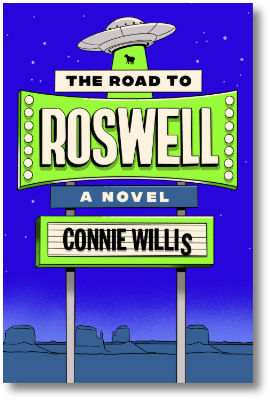It’s been a while since I wrote a book review. To be honest, I haven’t done much actual book reading — too many distractions and other bad excuses — but over the past few weeks, I’ve finished three that made enough of an impact on me that I’d like to share my thoughts here.

Tomorrow marks the 78th anniversary of the dropping of the atomic bomb on Hiroshima, and there seems to be renewed interest in that historical event thanks to a movie and a book.
 I don’t plan to see Oppenheimer, the less colorful and by some accounts also the less woke half of the Barbenhiemer portmanteau, but that doesn’t mean that I’m not interested in learning more about the events leading up to the Japanese surrender at the end of World War II. I strongly recommend Evan Thomas’s deeply-researched and masterfully-crafted Road to Surrender (subtitled Three Men and the Countdown to the End of World War II), and you may find that the impact of the book is such that contemplating any Hollywood-generated storyline seemed like choosing between prime rib and a bowl of Cap’n Crunch for dinner.
I don’t plan to see Oppenheimer, the less colorful and by some accounts also the less woke half of the Barbenhiemer portmanteau, but that doesn’t mean that I’m not interested in learning more about the events leading up to the Japanese surrender at the end of World War II. I strongly recommend Evan Thomas’s deeply-researched and masterfully-crafted Road to Surrender (subtitled Three Men and the Countdown to the End of World War II), and you may find that the impact of the book is such that contemplating any Hollywood-generated storyline seemed like choosing between prime rib and a bowl of Cap’n Crunch for dinner.
While some mostly well-intentioned folks claim that there were ample opportunities to end the war without The Bomb, Thomas presents an absolutely compelling counterargument. He does so by not only presenting the American side of the picture, but also the Japanese perspective…and the latter is chilling in its implications. While there’s no doubt that the first use of nuclear weaponry in a war has changed the course of human history, there’s also no doubt that that use saved millions of lives, not only American and its allies, but also Japanese, Russian, Chinese, and other “collateral” victims.
The three men referred to in the subtitle are Henry Stimson, the American Secretary of War (a position which later became Secretary of Defense), who oversaw J. Robert Oppenheimer under the Manhattan Project; General Carl “Tooey” Spaatz, head of strategic bombing in the Pacific, who supervised the planes that dropped the bombs; and Japanese Foreign Minister Shigenori Togo, the only one in Emperor Hirohito’s Supreme War Council who counseled surrender — unsuccessfully — even before Hiroshima. The book leans heavily on the first person accounts by these men, as well as scores of others, of the events leading up to and including the bombings.
Even if you have only a casual interest in how WWII ended, Road to Surrender is essential reading, not only as an historical primer, but also to lay the foundation for better understanding of why the world is now laboring under the burden of Mutually Assured Destruction.

Serendipity comes in many forms, not all of which are on the surface positive. During a recent trip to San Diego, I finished reading a book on my Kindle, put the device in the seatback pocket in front of me, and left it there after deplaning. [It still hasn’t shown up, although Alaska Airlines assures me that it has its best people on the job.] As a result, I later found myself in the Coronado Bay Books store, in the unusual position (for me) of considering the purchase of an actual treeware tome.
 My eye was eventually drawn to Susanna Clarke’s Piranesi, published in 2020. Clarke is an English author whose work falls into the genres of fantasy and “alternate history,” and although her first novel, Jonathan Strange and Mr Norrell, won the Hugo Award in 2004, I wasn’t familiar with her work. After that novel, Clarke authored some short story collections, and Piranesi followed as her second novel.
My eye was eventually drawn to Susanna Clarke’s Piranesi, published in 2020. Clarke is an English author whose work falls into the genres of fantasy and “alternate history,” and although her first novel, Jonathan Strange and Mr Norrell, won the Hugo Award in 2004, I wasn’t familiar with her work. After that novel, Clarke authored some short story collections, and Piranesi followed as her second novel.
I don’t have the words to adequately describe the wonder and richness of the world that Clarke has created in this book. Suffice it to say that the setting is in the House, a structure of apparently infinite size, comprised of countless rooms and hallways, and subject to the effects of natural phenomena which, although all familiar to us, are nonetheless puzzling as to their source and meaning.
The House is occupied by only two people: Piranesi — not his real name; he doesn’t remember what that is — through whose eyes and mind we attempt to make sense of the surroundings, and the Other, a mysterious man with apparent access to resources beyond Piranesi’s ken, and who gave Piranesi his name. Most of the first part of the book is devoted to Piranesi’s experiences and descriptions, and those are the most simple and engaging bits. Things grow more mysterious and even foreboding as new characters arrive on the scene, and the reader is challenged to distinguish reality from…not reality?
Some reviewers have described the book as “enthralling” and “transcendent.” I suppose those are subjective judgments. I did find it to be highly imaginative and unlike almost anything I’ve ever read. The ending left me a bit unsatisfied, but the journey was nevertheless worth the effort. If you’re a fan of elaborate fantasy environments, Piranesi will be worth your while, I think.
The name Piranesi, and the concept of the House, apparently pays homage to the 18th-century Italian architect and artist Giovanni Battista Piranesi, who created a series of etchings entitled Carceri d’invenzione (translated to Imaginary Prisons). Those etchings described incredibly complex and imaginative structures, many of which contained so-called impossible geometries (aka impossible objects), which are probably more familiar to modern observers in the works of M.C. Escher. While the House in Piranesi is never pictured nor described in detail, it’s easy to imagine the inspiration.

 The final book in this trio of reviews is by another gifted female author, Connie Willis, a highly regarded and much awarded writer of speculative fiction and a member of the Science Fiction Hall of Fame. Unfortunately, The Road to Roswell did not live up to my expectations based on my previous readings (in particular, the award-winning The Doomsday Book and To Say Nothing of the Dog, both of which have time travel as their primary themes).
The final book in this trio of reviews is by another gifted female author, Connie Willis, a highly regarded and much awarded writer of speculative fiction and a member of the Science Fiction Hall of Fame. Unfortunately, The Road to Roswell did not live up to my expectations based on my previous readings (in particular, the award-winning The Doomsday Book and To Say Nothing of the Dog, both of which have time travel as their primary themes).
The Road to Roswell is a silly, occasionally amusing, and mostly improbable (gasp!) account of an alien invasion, although “invasion” is definitely on the loose end of the meaning of that term. The aliens in question are essentially sentient cacti whose primary strengths rest in their ability to stretch their tentacles for apparently infinite lengths and who communicate by neon lights embedded in their “skin.”
The plot of the novel revolves around the attempt by one of the aliens to rescue a friend in need, and in order to accomplish this task, said alien kidnaps a series of humans to assist in the quest. All of these characters are drawn very broadly, although most of them turn out to be something other than one will initially think.
This is fiction with very little science to go with it, and it occasionally veers into slapstick. It’s a quick read as befits what seems to have been a quick write for Willis. I expected better from someone with her laudable track record. (On the plus side, her descriptions of New Mexico do ring true.)

